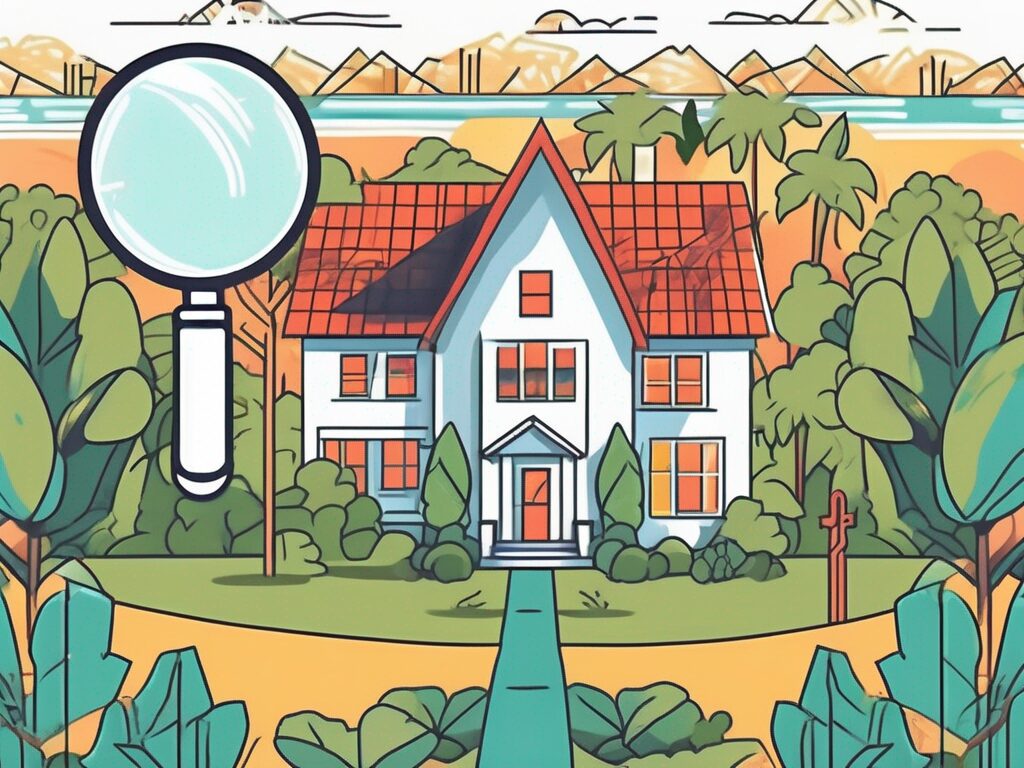
Agent A-Team or Solo Superhero? Finding the Right Real Estate Partner for Your Selling Journey in Wildwood Florida
When it comes to selling your home in Wildwood, Florida,…
January 29, 2024
In the world of real estate, there are numerous factors to consider when purchasing a property. From location to amenities, each aspect plays a crucial role in finding the perfect home. One often overlooked factor is lot size – the size of the land on which a property is situated. While it may seem insignificant compared to other considerations, lot size can have a significant impact on your homebuying experience. In this comprehensive guide, we will delve into the significance of lot size in real estate and explore the various factors that homebuyers must take into account.
When evaluating potential properties, determining the importance of lot size is essential. Lot size can influence not only the functionality of a property but also its potential for expansion or development. It is important to understand the various factors that can impact the value and usability of a property’s land.
Lot size plays a crucial role in the overall design and layout of a property. A larger lot provides more space for outdoor amenities such as gardens, swimming pools, or even a tennis court. It allows homeowners to create expansive landscapes that can be enjoyed by family and friends. On the other hand, a smaller lot may require more creative thinking to maximize the use of limited space. It can inspire innovative design solutions and encourage homeowners to prioritize efficiency and functionality.
One of the key factors to consider when evaluating lot size is the intended use of the property. If you envision building a custom home or adding additional structures, a larger lot may be necessary. This allows for more flexibility in terms of design and layout. It provides room for expansion and the ability to create a truly unique living space.
Similarly, if you prefer a low-maintenance lifestyle, a smaller lot may be more suitable. With less land to maintain, homeowners can spend less time on yard work and more time enjoying other activities. This can be particularly appealing for individuals or families with busy schedules or those who prioritize convenience.
Another important consideration is the surrounding neighborhood. The size of nearby lots can impact the overall aesthetic appeal and the sense of privacy you will experience. If you value privacy, a larger lot may be preferable, as it provides a greater buffer between your home and neighboring properties. On the other hand, a smaller lot in a close-knit community can foster a sense of community and encourage social interactions with neighbors.
Amenities such as parks or green spaces can also enhance the desirability of a property’s lot size. Living near a park or having access to green spaces can provide opportunities for outdoor activities, exercise, and relaxation. It can contribute to a higher quality of life and add value to the property.
When purchasing a property with the intention of building, it is crucial to assess the land conditions. Factors such as soil composition, slope, and drainage can significantly impact construction costs and feasibility. Soil composition, for example, can affect the stability of the foundation and the ease of excavation. A thorough analysis of the land can help identify any potential challenges or opportunities for improvement.
Consulting with professionals such as architects or engineers can provide valuable insights into the suitability of a property’s lot for your building plans. They can assess the land conditions and provide recommendations on how to optimize the use of the lot. Their expertise can help ensure that the construction process goes smoothly and that the final result meets your expectations.
The placement of a property on its lot can greatly affect the functionality and enjoyment of the space. Considering factors such as sunlight exposure, privacy from neighboring properties, and access to amenities can help you optimize the use of your land.
Maximizing sunlight exposure can have a significant impact on energy efficiency and the overall ambiance of the property. Placing windows strategically to capture natural light can reduce the need for artificial lighting during the day and create a bright and inviting atmosphere. It can also contribute to the health and well-being of the occupants by providing ample exposure to natural light.
Privacy is another important consideration when determining land placement. Positioning the main living areas away from neighboring properties can create a more secluded and intimate environment. This can be achieved through thoughtful landscaping, the strategic placement of fences or walls, or the orientation of the building itself. Privacy can enhance the overall enjoyment of outdoor spaces and provide a sense of tranquility.
Access to amenities is also a factor to consider when deciding on land placement. Placing the property in proximity to parks, schools, shopping centers, or public transportation can enhance convenience and accessibility. It can make daily activities more convenient and contribute to a higher quality of life.
With proper planning, you can create outdoor spaces that accommodate your lifestyle and enhance your overall living experience. Whether it’s a spacious backyard for hosting gatherings or a cozy courtyard for relaxation, the layout and design of your property can be tailored to meet your specific needs and preferences.
While some homebuyers may prioritize the size of the house itself, there is a significant group of buyers who place great value on having ample acreage. There are several benefits that come with owning a larger lot, which we will explore in this section.
One of the primary advantages of owning a larger lot is the increased privacy it offers. With more space between neighboring properties, homeowners can enjoy a greater sense of seclusion and tranquility. Imagine waking up in the morning and stepping outside onto your sprawling property, surrounded by nature’s beauty. The sound of birds chirping and the gentle rustle of leaves in the wind create a serene atmosphere that is hard to replicate in a more confined space.
Larger lots also provide more room for outdoor activities such as gardening, landscaping, and entertaining. Picture yourself strolling through your expansive garden, filled with vibrant flowers and lush greenery. With ample acreage, you can let your creativity flourish as you design and maintain your own personal oasis. Host outdoor gatherings with friends and family, where everyone can spread out and enjoy the spaciousness of your property. Whether it’s a barbecue, a game of catch, or simply lounging under the shade of a tree, the possibilities for outdoor enjoyment are endless.
Another benefit of ample acreage is the potential for future development or expansion. Whether you envision building additional structures, creating outdoor recreational areas, or even subdividing the land, owning more land provides endless possibilities for customization and investment. Imagine constructing a guest house or a workshop on your property, giving you the flexibility to accommodate visitors or pursue hobbies. With ample acreage, you can also explore the option of creating outdoor recreational areas, such as a tennis court, a swimming pool, or a playground for children. The ability to expand and adapt your property to suit your evolving needs is a valuable asset.
While the allure of acreage may be enticing, it is important to consider any restrictions on land use. Some properties, especially those in urban or suburban areas, may be subject to zoning regulations or homeowners’ association rules. It is essential to research and understand these restrictions before making a purchase to ensure that your plans for the land align with the existing regulations.
However, even with certain restrictions, there are often creative solutions that can be explored. For example, if you are interested in starting a small farm on your acreage, you may be able to obtain special permits or work with local authorities to find a compromise. Additionally, some homeowners’ associations may have guidelines in place to maintain the aesthetic appeal of the neighborhood while still allowing for certain types of land use. By understanding and working within these limitations, you can still make the most of your ample acreage.
In the realm of real estate, there is an ongoing debate regarding the balance between house size and lot size. Some homebuyers prefer spacious houses on smaller lots, while others opt for expansive lots with smaller houses. In this section, we will explore the appeal and advantages of both approaches.
For many homebuyers, a spacious house is a top priority. They prioritize square footage and the number of rooms over the size of the outdoor space. This approach often appeals to individuals who prioritize indoor amenities and value a low-maintenance lifestyle. Smaller lots require less time and effort for upkeep, allowing homeowners to focus on enjoying their homes rather than maintaining the property.
Imagine coming home to a spacious house, where every family member has their own room to retreat to and relax. The extra square footage allows for more flexibility in terms of furniture arrangement and interior design. You can have a dedicated home office, a playroom for the kids, or a cozy reading nook. With a smaller lot, you can still have a backyard, albeit more compact, where you can set up a barbecue grill or create a small garden oasis.
Furthermore, a smaller lot means less outdoor maintenance. Instead of spending hours mowing a large lawn or tending to extensive landscaping, homeowners can spend their time on other activities they enjoy. Whether it’s pursuing a hobby, spending quality time with family, or simply unwinding after a long day, the appeal of a low-maintenance lifestyle cannot be overstated.
On the other hand, some homebuyers prefer expansive lots with smaller houses. This approach emphasizes outdoor living, enjoying nature, and creating a sense of privacy. These homeowners often prioritize landscaping, gardening, and outdoor entertaining spaces. The focus is on maximizing the potential of the land while maintaining a cozy living space indoors.
Imagine waking up to the serene beauty of a sprawling garden just outside your window. With an expansive lot, you have the freedom to create your own personal oasis. You can design and cultivate a variety of plants, flowers, and trees, creating a vibrant and colorful landscape that brings joy and tranquility. The possibilities are endless, from creating a vegetable garden to growing your own herbs and spices.
Additionally, an expansive lot provides ample space for outdoor entertaining. You can host barbecues, garden parties, or simply enjoy a quiet evening under the stars. With the right landscaping and outdoor furniture, you can create different zones within your lot, such as a cozy seating area, a fire pit for roasting marshmallows, or even a small pond with a soothing waterfall.
Privacy is another advantage of having an expansive lot. With more space between your house and your neighbors, you can enjoy a greater sense of seclusion. Whether you’re lounging by the pool or reading a book on a hammock, you can do so without feeling exposed to prying eyes. This sense of privacy allows for a more intimate and peaceful living experience.
While lot size is an important consideration when purchasing a property, there are several other factors that homebuyers must take into account. In this section, we will explore some of these considerations to help you make an informed decision.
When it comes to choosing a property, it’s not just about the size of the lot. There are many other factors that can greatly impact your experience as a homeowner. From land restrictions and regulations to visualizing lot size, let’s dive deeper into these important considerations.
In addition to zoning regulations and homeowners’ association rules, there may be other land restrictions and regulations that could impact your plans for the property. These can include environmental regulations, easements, or restrictions on certain activities such as farming or raising livestock. It is essential to conduct thorough research and consult with professionals to ensure that the property meets your specific needs and goals.
Imagine buying a property with dreams of starting a small farm, only to later discover that there are strict regulations prohibiting agricultural activities. By uncovering these land restrictions and regulations beforehand, you can avoid any potential disappointments or conflicts down the road.
Understanding acre measurements can be challenging for many homebuyers. While a numeric value may provide an idea of the lot size, visualizing the actual space can be difficult. Working with a real estate agent or using online tools that provide visual representations can help you better grasp the scale and proportions of different lot sizes.
Imagine looking at a property listing that states it has a one-acre lot. Without a frame of reference, it can be hard to picture how much space that actually is. By utilizing tools that offer visual representations, you can get a better sense of the lot’s dimensions and how it aligns with your vision for your future home.
Aside from whole-acre measurements, properties may also be measured in fractional acres. Common fractional acre measurements include half-acre, quarter-acre, and tenth-acre parcels. These smaller lot sizes are often located in urban or suburban areas and offer different advantages and considerations than larger lots. It is important to assess your priorities and lifestyle preferences to determine which lot size best suits your needs.
If you prefer a more manageable outdoor space or prioritize being closer to amenities, a smaller fractional acre lot might be the perfect fit for you. On the other hand, if you have dreams of a sprawling backyard or desire more privacy, a larger lot size might be more suitable. Consider your lifestyle, future plans, and the trade-offs associated with different lot sizes to make an informed decision.
Remember, when it comes to choosing a property, there’s more to consider than just the size of the lot. By exploring these additional factors, you can ensure that the property you choose aligns with your needs, goals, and vision for your future home.
In recent years, there has been a shift in perspective regarding the American dream of homeownership. This shift has led to an increasing number of homebuyers opting for smaller lots and houses. In this section, we will examine the median lot size for single-family homes in the United States and discuss the factors driving this downsizing trend.
According to recent data, the median lot size for single-family homes in the United States is approximately 0.25 acres. This represents a decrease in lot size compared to previous decades. Several factors contribute to this downsizing trend, including a desire for lower maintenance, affordability, and a focus on sustainability.
Many homebuyers value the convenience and lower maintenance associated with smaller lots. They prefer to spend their time and resources on other pursuits rather than extensive yard work. Smaller lots also tend to be more affordable, allowing homebuyers to allocate their budget towards other priorities like a higher quality of construction, desirable location, or indoor amenities.
Sustainability is another factor driving the downsizing trend. Smaller lots often result in more compact communities, reducing urban sprawl and preserving natural landscapes. This approach aligns with the growing global emphasis on environmental consciousness and efficient land use.
While the downsizing trend may not appeal to everyone, it is certainly reshaping the real estate landscape. Homebuyers are reconsidering their priorities and exploring the benefits of smaller lots and houses.
In the realm of real estate, lot size is a significant factor that homebuyers must consider when making a purchase. Determining the importance of lot size requires careful evaluation of personal preferences, usage requirements, and future plans. Whether you prioritize ample acreage or prefer a smaller, low-maintenance lot, understanding the significance of lot size and its impact on your overall homebuying experience is essential. Armed with this comprehensive guide, you are now equipped to make informed decisions when navigating the real estate market.

If you want the Richr team to help you save thousands on your home just book a call.
 Book a call
Book a call